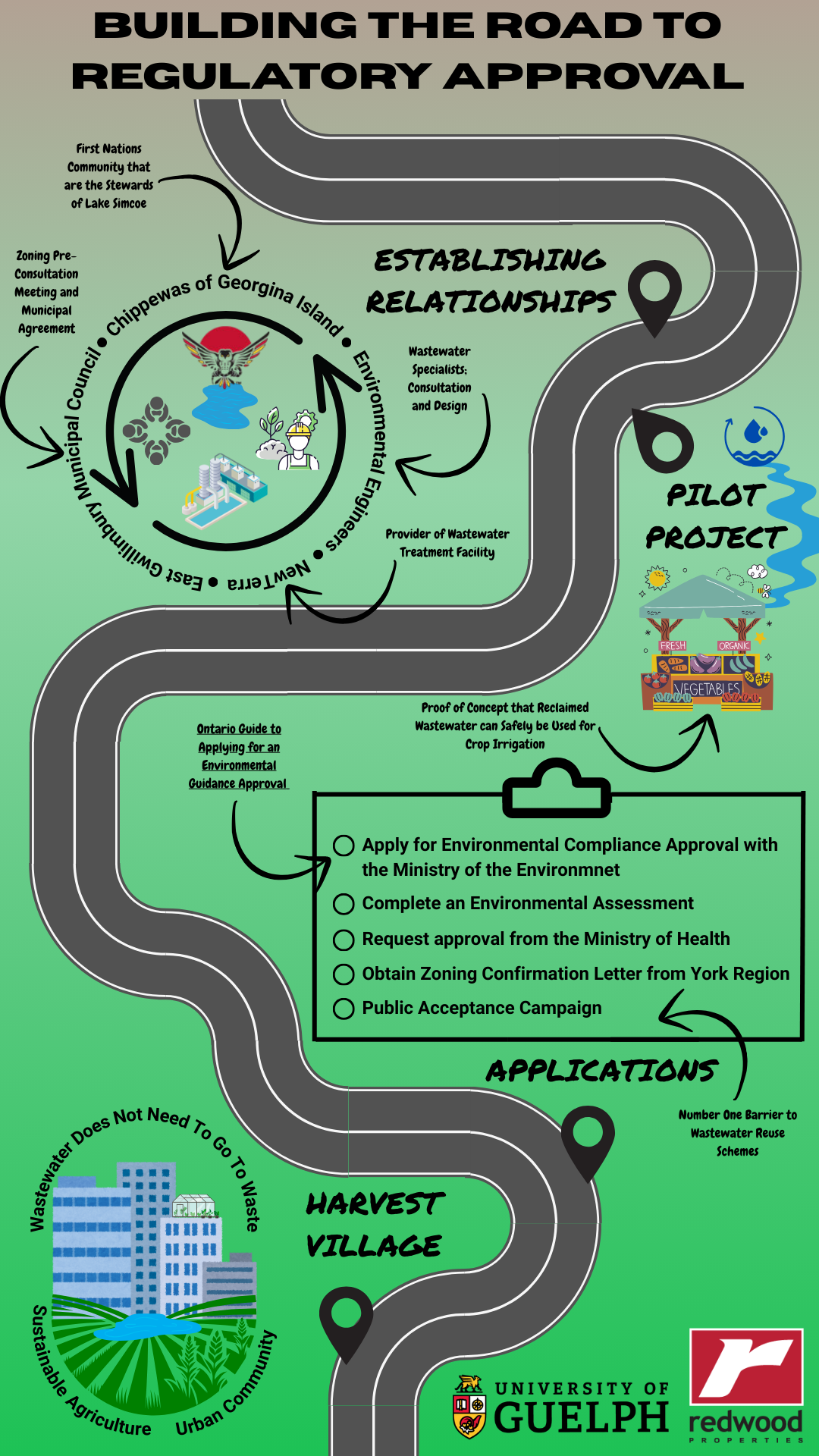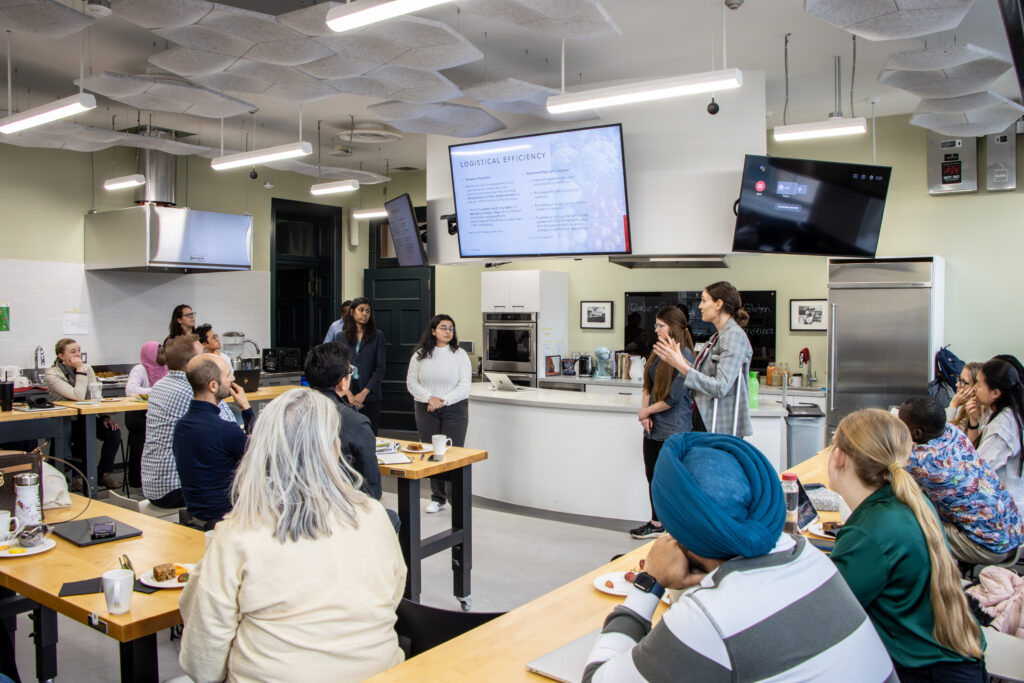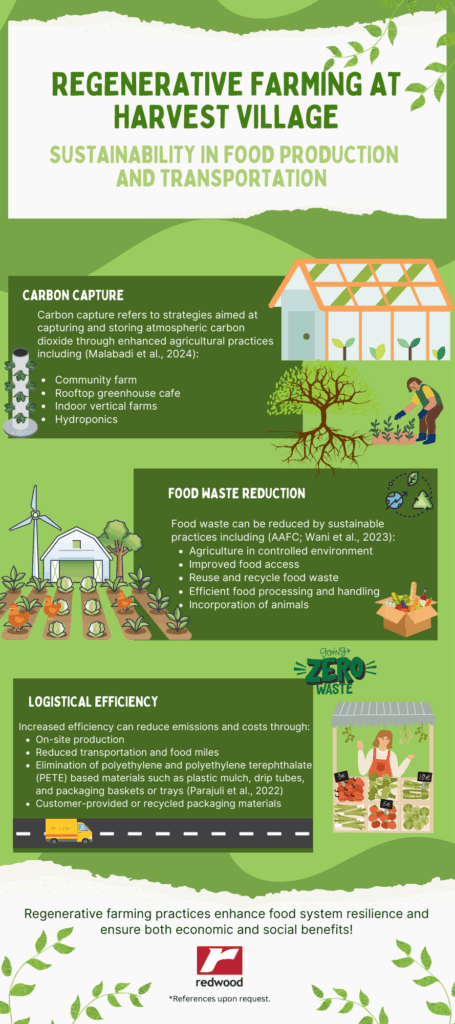(Note: This post is a continuation of our series on highlighting the graduate course UNIV*6050: Innovation and Entrepreneurship in Agri-Food Systems. Click here to read our first post and follow along as we share more about the outcomes.)
Throughout the winter, University of Guelph students worked with a new community partner, Ontario-based developer Redwood Properties – gathering and sharing information to help them plan for a regenerative, circular community. This partnership offered experiential learning as part of the graduate course UNIV*6050: Innovation and Entrepreneurship in Agri-Food Systems.
The development, Harvest Village, is envisioned to be a true mixed-use community – one that is built on the principles of sustainability, capturing and re-using energy and water, reducing food waste and offering housing. By integrating regenerative food production and retail opportunities, Harvest Village can become a circular system. However, building an innovative hub comes with a number of challenges, so Redwood Properties sought the expertise of our students to help address them.
Group 1: Regulatory Challenges and Funding Opportunities
As a housing development, Harvest Village will, of course, generate wastewater – water that has been used by households for various purposes. As part of a circular system, Redwood Properties was interested in how they could reclaim this potential waste as a resource.
Wastewater being repurposed for irrigation is not commonly practiced in Canada yet, but it is common elsewhere in the world. Over 10% of the world’s population eats food produced with wastewater irrigation, and the use of recycled municipal wastewater has been allowed in California for over a century. With water shortages across the globe, wastewater can serve as a climate-independent source of water. In fact, increasing water recycling and reuse is one of the United Nations Sustainable Development Goals.

Infographic depicting the “road to regulatory approval” developed by graduate students in the UNIV*6050 course.
However, in Ontario, there is no clear precedent or path for regulatory approval for wastewater reuse – which means Redwood will need to build relationships, involve experts in developing and approving plans, and test out their approach through a pilot project while working towards approval from Provincial ministries.
And then there’s the ‘ick factor!’ Public acceptance of wastewater reuse can be hard to overcome. Awareness and education campaigns can help people understand that wastewater reuse is safe and sustainable, and Redwood can get some help along the way.
As part of their partnership, students helped identify 6 funding opportunities – either loans or grants worth up to $5.5 million – that the Redwood team could consider. Harvest Village may be eligible for this funding to help them develop and pilot their novel approach.
Group 2: Sustainable Logistics

As a sustainable urban farm, Harvest Village is interested in how they can reduce their environmental impact. The second student group focused on logistics for Redwood Properties – investigating how regenerative practices, if integrated into the new development, could capture and sequester carbon, add efficiency to food production and transport and reduce food waste.
The students envisioned a community farm that sequestered carbon through enhanced soil health (learn more about this in a future blog post). Animals, such as chickens or goats, will provide manure for fertilizer, eat food scraps (reducing waste), create products like eggs and milk, and accelerate plant growth and carbon sequestration.
Indoors, the housing development could include vertical farms or green walls that use hydroponics, aeroponics, or soil-based media to grow crops. A rooftop greenhouse could offer a circular system with efficient use of heat, water and electricity. Even fish could be produced locally, through small aquaculture systems. Decreasing food transportation miles, according to research identified by the students, could reduce carbon emissions by up to 47% for crops like strawberries. Furthermore, these greenhouses could become a tourist attraction if turned into a rooftop café.
Careful planning and controlled conditions, such as those found in greenhouses, reduce waste at the production stage, allowing farmers to consider affordable pricing, donation to food banks, and collaboration with local food processors. A survey also revealed that the average round trip by farmers market vendors was 57 km – emissions that will be eliminated if food is produced on site.

Infographic depicting potential regenerative farming and sustainability practices at Harvest Village developed by graduate students in the UNIV*6050 course.
Interested in learning more about the work undertaken by student groups in this course? Stay tuned for a series of blog posts with more information about other aspects of this collaborative project.
Interested in education opportunities at AFI? Check out our educational programming at arrellfoodinstitute.ca/education or reach out to afieducation@uoguelph.ca with an expression of interest.